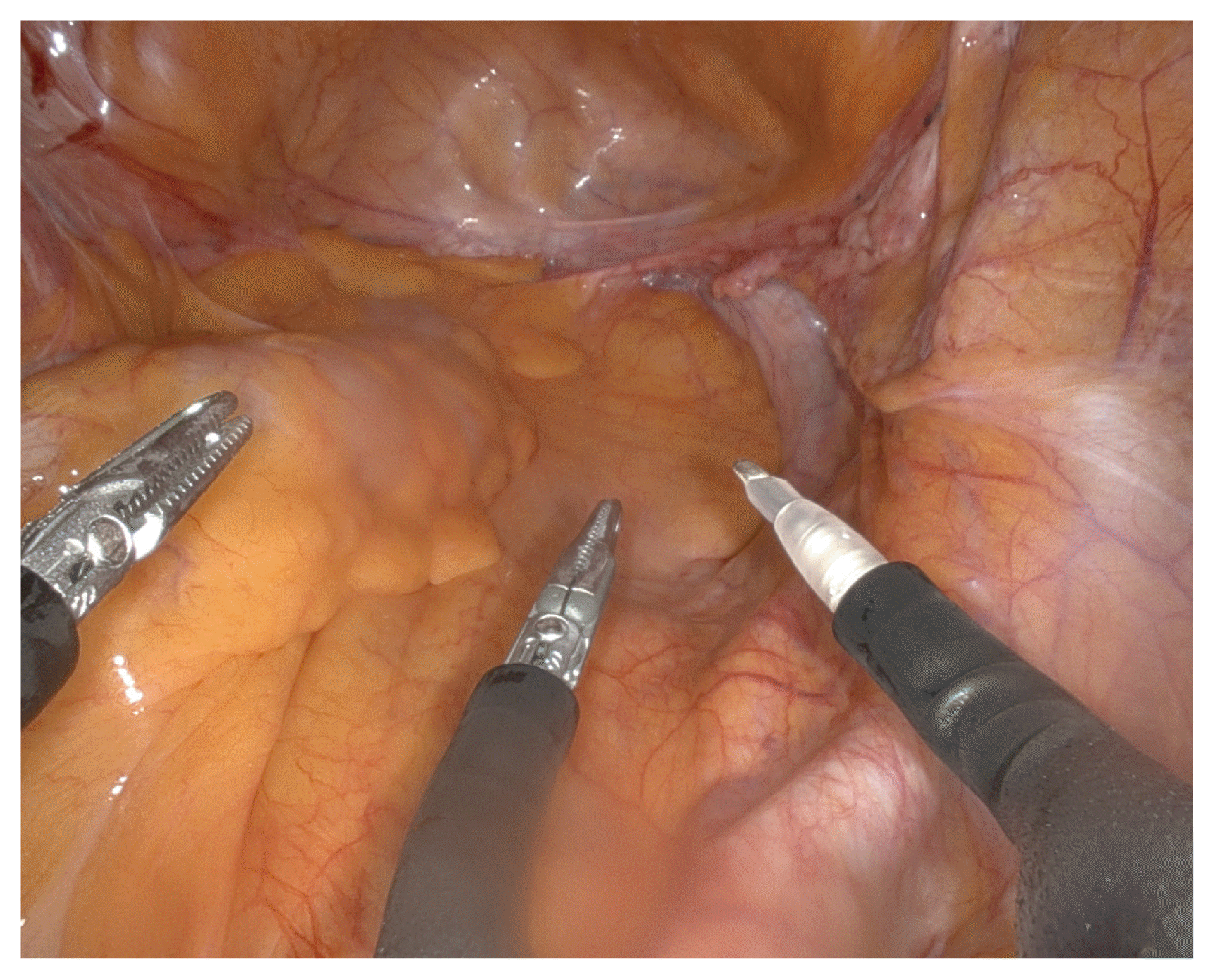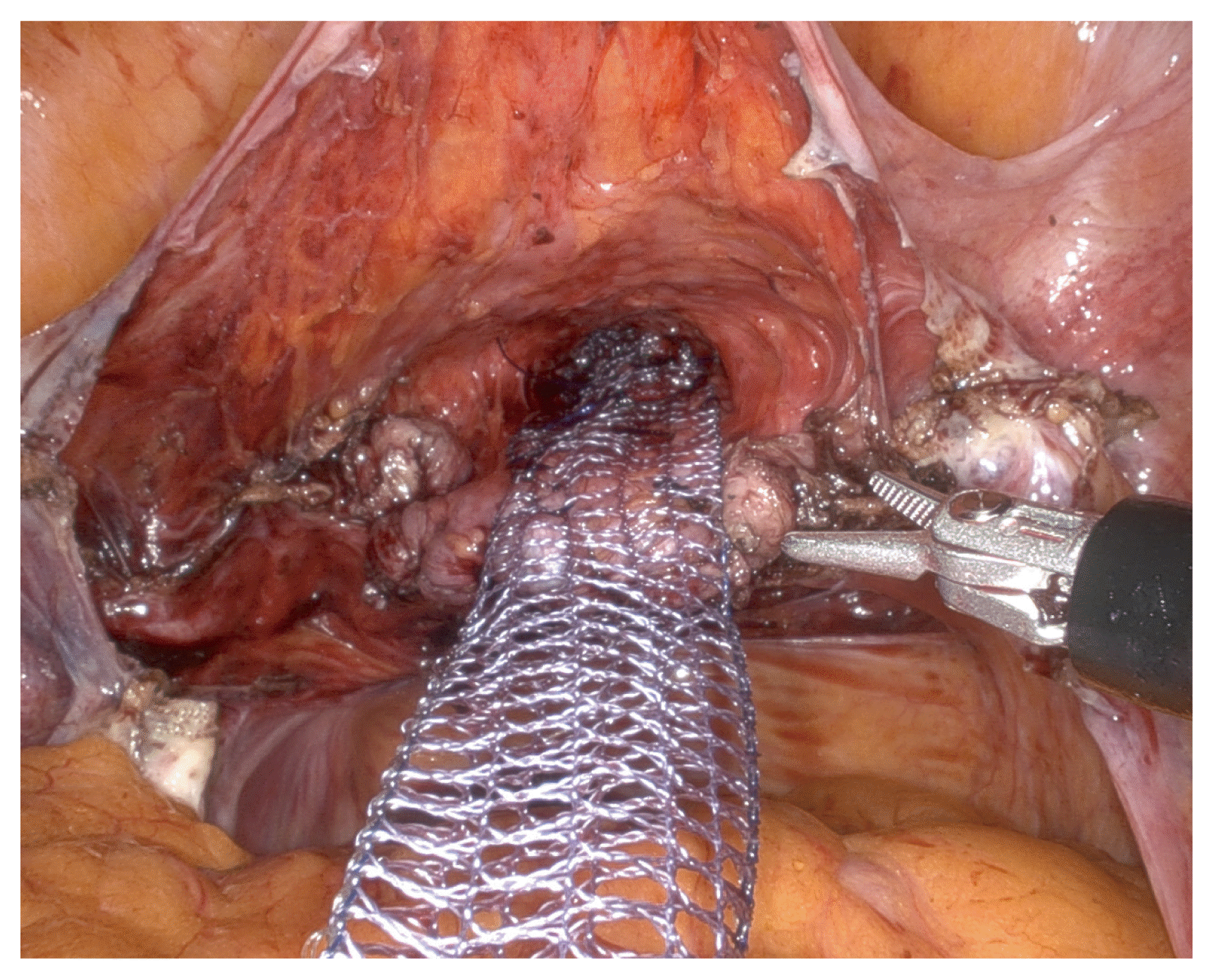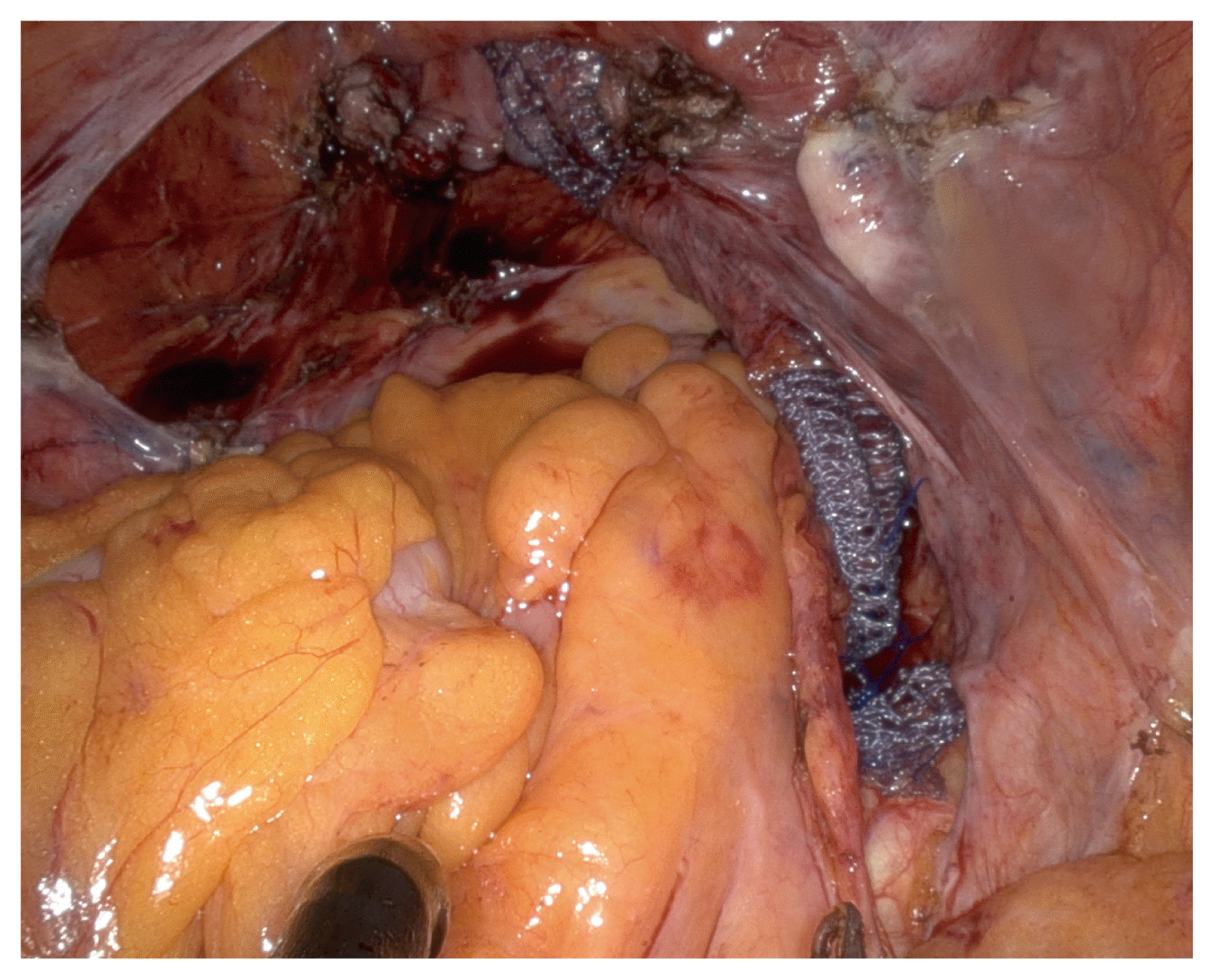1. Wu JM, Matthews CA, Conover MM, Pate V, Funk MJ. Lifetime risk of stress incontinence or pelvic organ prolapse surgery. Obstet Gynecol. 2014; 123:1201.
2. Pelvic organ prolapse: ACOG practice bulletin, number 214. Obstet Gynecol. 2019. 134:e126–42.
3. Dällenbach P. To mesh or not to mesh: a review of pelvic organ reconstructive surgery. Int J Womens Health. 2015; 7:331–43.
4. Maher C, Baessler K, Glazener CM, Adams EJ, Hagen S. Surgical management of pelvic organ prolapse in women. Cochrane Database Syst Rev. 2007. (4):CD004014.

5. Haya N, Baessler K, Christmann-Schmid C, de Tayrac R, Dietz V, Guldberg R, et al. Prolapse and continence surgery in countries of the Organization for Economic Cooperation and Development in 2012. Am J Obstet Gynecol. 2015; 212:755e1–27.

6. Nygaard IE, McCreery R, Brubaker L, Connolly A, Cundiff G, Weber AM, et al. Abdominal sacrocolpopexy: a comprehensive review. Obstet Gynecol. 2004; 104:805–23.

7. Callewaert G, Bosteels J, Housmans S, Verguts J, Van Cleynenbreugel B, Van der Aa F, et al. Laparoscopic versus robotic-assisted sacrocolpopexy for pelvic organ prolapse: a systematic review. Gynecol Surg. 2016; 13:115–23.

8. Moreno Sierra J, Ortiz Oshiro E, Fernandez Pérez C, Galante Romo I, Corral Rosillo J, Prieto Nogal S, et al. Long-term outcomes after robotic sacrocolpopexy in pelvic organ prolapse: prospective analysis. Urol Int. 2011; 86:414–8.

9. Gala RB, Margulies R, Steinberg A, Murphy M, Lukban J, Jeppson P, et al. Systematic review of robotic surgery in gynecology: robotic techniques compared with laparoscopy and laparotomy. J Minim Invasive Gynecol. 2014; 21:353–61.

10. Serati M, Bogani G, Sorice P, Braga A, Torella M, Salvatore S, et al. Robot-assisted sacrocolpopexy for pelvic organ prolapse: a systematic review and meta-analysis of comparative studies. Eur Urol. 2014; 66:303–18.

11. Shin HJ, Yoo HK, Lee JH, Lee SR, Jeong K, Moon HS. Robotic single-port surgery using the da Vinci SP® surgical system for benign gynecologic disease: a preliminary report. Taiwan J Obstet Gynecol. 2020; 59:243–7.
12. Matanes E, Lauterbach R, Mustafa-Mikhail S, Amit A, Wiener Z, Lowenstein L. Single port robotic assisted sacrocolpopexy: our experience with the first 25 cases. Female Pelvic Med Reconstr Surg. 2017; 23:e14–8.

13. Matanes E, Boulus S, Lauterbach R, Amit A, Weiner Z, Lowenstein L. Robotic laparoendoscopic single-site compared with robotic multi-port sacrocolpopexy for apical compartment prolapse. Am J Obstet Gynecol. 2020; 222:358e1–11.

14. Ercoli A, Campagna G, Delmas V, Ferrari S, Morciano A, Scambia G, et al. Anatomical insights into sacrocolpopexy for multicompartment pelvic organ prolapse. Neurourol Urodyn. 2016; 35:813–8.

15. Muavha DA, Ras L, Jeffery S. Laparoscopic surgical anatomy for pelvic floor surgery. Best Pract Res Clin Obstet Gynaecol. 2019; 54:89–102.

16. Liu J, Bardawil E, Zurawin RK, Wu J, Fu H, Orejuela F, et al. Robotic single-site sacrocolpopexy with retroperitoneal tunneling. JSLS. 2018; 22:e201800009.

17. Oh S, Bae N, Cho HW, Park YJ, Kim YJ, Shin JH. Learning curves and perioperative outcomes of single-incision robotic sacrocolpopexy on two different da Vinci® surgical systems. J Robot Surg. 2023; 17:1457–62.
18. Hudson CO, Northington GM, Lyles RH, Karp DR. Outcomes of robotic sacrocolpopexy: a systematic review and meta-analysis. Female Pelvic Med Reconstr Surg. 2014; 20:252–60.
19. Chan SS, Pang SM, Cheung TH, Cheung RY, Chung TK. Laparoscopic sacrocolpopexy for the treatment of vaginal vault prolapse: with or without robotic assistance. Hong Kong Med J. 2011; 17:54–60.
20. Anand M, Woelk JL, Weaver AL, Trabuco EC, Klingele CJ, Gebhart JB. Perioperative complications of robotic sacrocolpopexy for post-hysterectomy vaginal vault prolapse. Int Urogynecol J. 2014; 25:1193–200.

21. Paraiso MFR, Jelovsek JE, Frick A, Chen CCG, Barber MD. Laparoscopic compared with robotic sacrocolpopexy for vaginal prolapse: a randomized controlled trial. Obstet Gynecol. 2011; 118:1005–13.
22. Culligan PJ, Lewis C, Priestley J, Mushonga N. Long-term outcomes of robotic-assisted laparoscopic sacrocolpopexy using lightweight Y-mesh. Female Pelvic Med Reconstr Surg. 2020; 26:202–6.

23. van Zanten F, van Iersel JJ, Paulides TJC, Verheijen PM, Broeders IAMJ, Consten ECJ, et al. Long-term mesh erosion rate following abdominal robotic reconstructive pelvic floor surgery: a prospective study and overview of the literature. Int Urogynecol J. 2020; 31:1423–33.

24. Nam G, Lee SR, Roh AM, Kim JH, Choi S, Kim SH, et al. Single-incision vs. multiport robotic sacrocolpopexy: 126 consecutive cases at a single institution. J Clin Med. 2021; 10:4457.

25. Lee SR, Roh AM, Jeong K, Kim SH, Chae HD, Moon HS. First report comparing the two types of single-incision robotic sacrocolpopexy: single site using the da Vinci Xi or Si system and single port using the da Vinci SP system. Taiwan J Obstet Gynecol. 2021; 60:60–5.

26. Mourik SL, Martens JE, Aktas M. Uterine preservation in pelvic organ prolapse using robot assisted laparoscopic sacrohysteropexy: quality of life and technique. Eur J Obstet Gynecol Reprod Biol. 2012; 165:122–7.

27. Fagan Matthew. Preoperative and postoperative complications and management. Alfred EB, Geoffrey WC, Steven ES, editors. Ostergard’s urogynecology and pelvic floor dysfunction. 6th ed. Philadelphia (PA): Lippincott Williams & Wilkins;2008. p. 328–9.
28. Matthews CA, Carroll A, Hill A, Ramakrishnan V, Gill EJ. Prospective evaluation of surgical outcomes of robot-assisted sacrocolpopexy and sacrocervicopexy for the management of apical pelvic support defects. South Med J. 2012; 105:274–8.

29. Germain A, Thibault F, Galifet M, Scherrer ML, Ayav A, Hubert J, et al. Long-term outcomes after totally robotic sacrocolpopexy for treatment of pelvic organ prolapse. Surg Endosc. 2013; 27:525–9.

30. Illiano E, Ditonno P, Giannitsas K, De Rienzo G, Bini V, Costantini E. Robot-assisted Vs laparoscopic sacrocolpopexy for high-stage pelvic organ prolapse: a prospective, randomized, single-center study. Urology. 2019; 134:116–23.

31. Anger JT, Mueller ER, Tarnay C, Smith B, Stroupe K, Rosenman A, et al. Robotic compared with laparoscopic sacrocolpopexy: a randomized controlled trial. Obstet Gynecol. 2014; 123:5–12.
32. Cundiff GW, Varner E, Visco AG, Zyczynski HM, Nager CW, Norton PA, et al. Risk factors for mesh/suture erosion following sacral colpopexy. Am J Obstet Gynecol. 2008; 199:688.e1–5.

33. Deblaere S, Hauspy J, Hansen K. Mesh exposure following minimally invasive sacrocolpopexy: a narrative review. Int Urogynecol J. 2022; 33:2713–25.

34. Siddiqui NY, Geller EJ, Visco AG. Symptomatic and anatomic 1-year outcomes after robotic and abdominal sacrocolpopexy. Am J Obstet Gynecol. 2012; 206:435.e1–5.

35. Geller EJ, Parnell BA, Dunivan GC. Pelvic floor function before and after robotic sacrocolpopexy: one-year outcomes. J Minim Invasive Gynecol. 2011; 18:322–7.

36. Myers EM, Siff L, Osmundsen B, Geller E, Matthews CA. Differences in recurrent prolapse at 1 year after total vs supracervical hysterectomy and robotic sacrocolpopexy. Int Urogynecol J. 2015; 26:585–9.

37. Nygaard I, Brubaker L, Zyczynski HM, Cundiff G, Richter H, Gantz M, et al. Long-term outcomes following abdominal sacrocolpopexy for pelvic organ prolapse. JAMA. 2013; 309:2016–24.

38. Schulten SF, Detollenaere RJ, IntHout J, Kluivers KB, Van Eijndhoven HW. Risk factors for pelvic organ prolapse recurrence after sacrospinous hysteropexy or vaginal hysterectomy with uterosacral ligament suspension. Am J Obstet Gynecol. 2022; 227:252e1–9.

39. Friedman T, Eslick GD, Dietz HP. Risk factors for prolapse recurrence: systematic review and meta-analysis. Int Urogynecol J. 2018; 29:13–21.

40. Oh S, Jeon MJ. How and on whom to perform uterine-preserving surgery for uterine prolapse. Obstet Gynecol Sci. 2022; 65:317–24.

41. Freeman RM, Pantazis K, Thomson A, Frappell J, Bombieri L, Moran P, et al. A randomised controlled trial of abdominal versus laparoscopic sacrocolpopexy for the treatment of post-hysterectomy vaginal vault prolapse: LAS study. Int Urogynecol J. 2013; 24:377–84.

42. Costantini E, Mearini L, Lazzeri M, Bini V, Nunzi E, di Biase M, et al. Laparoscopic versus abdominal sacrocolpopexy: a randomized, controlled trial. J Urol. 2016; 196:159–65.

43. Coolen AWM, van Oudheusden AMJ, Mol BWJ, van Eijndhoven HWF, Roovers JWR, Bongers MY. Laparoscopic sacrocolpopexy compared with open abdominal sacrocolpopexy for vault prolapse repair: a randomised controlled trial. Int Urogynecol J. 2017; 28:1469–79.

44. Matthews CA, Geller EJ, Henley BR, Kenton K, Myers EM, Dieter AA, et al. Permanent compared with absorbable suture for vaginal mesh fixation during total hysterectomy and sacrocolpopexy: a randomized controlled trial. Obstet Gynecol. 2020; 136:355–64.
45. Tan-Kim J, Nager CW, Grimes CL, Luber KM, Lukacz ES, Brown HW, et al. A randomized trial of vaginal mesh attachment techniques for minimally invasive sacrocolpopexy. Int Urogynecol J. 2015; 26:649–56.

46. Berger AA, Tan-Kim J, Menefee SA. Anchor vs suture for the attachment of vaginal mesh in a robotic-assisted sacrocolpopexy: a randomized clinical trial. Am J Obstet Gynecol. 2020; 223:258.e1–8.

47. Lee SR. Robotic single-site
® sacrocolpopexy: first report and technique using the single-site
® wristed needle driver. Yonsei Med J. 2016; 57:1029–33.

48. Ganesan V, Goueli R, Rodriguez D, Hess D, Carmel M. Single-port robotic-assisted laparoscopic sacrocolpopexy with magnetic retraction: first experience using the SP da Vinci platform. J Robot Surg. 2020; 14:753–8.

49. Gupta P, Ehlert M, Bartley J, Gilleran J, Killinger KA, Boura JA, et al. Perioperative outcomes, complications, and efficacy of robotic-assisted prolapse repair: a single institution study of 196 patients. Female Pelvic Med Reconstr Surg. 2018; 24:408–11.

50. Thomas TN, Davidson ERW, Lampert EJ, Paraiso MFR, Ferrando CA. Long-term pelvic organ prolapse recurrence and mesh exposure following sacrocolpopexy. Int Urogynecol J. 2020; 31:1763–70.






 PDF
PDF Citation
Citation Print
Print






 XML Download
XML Download